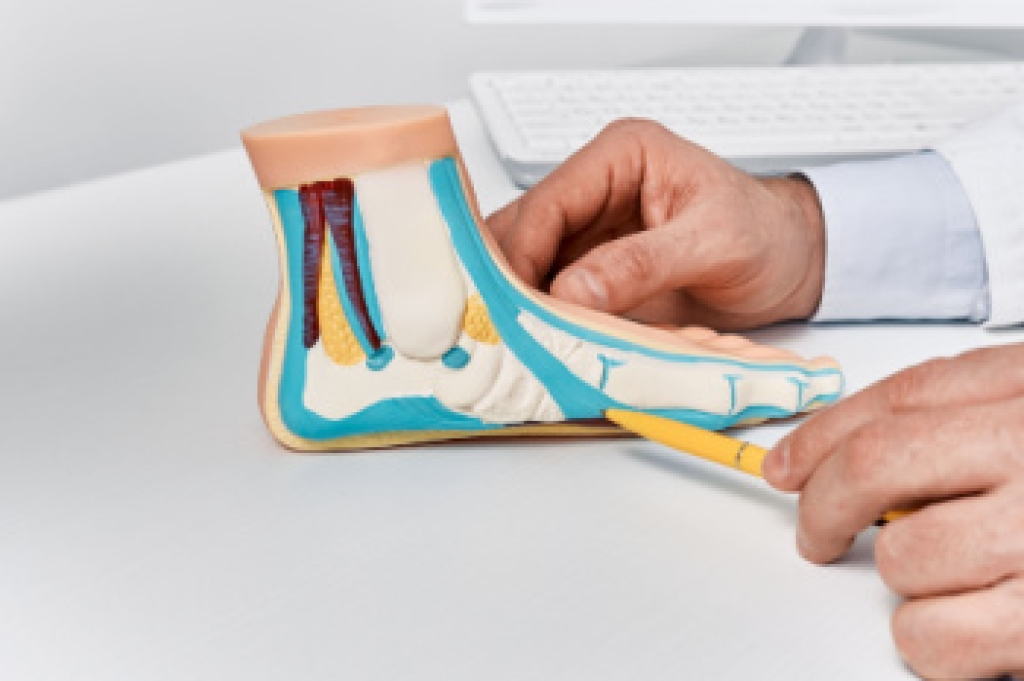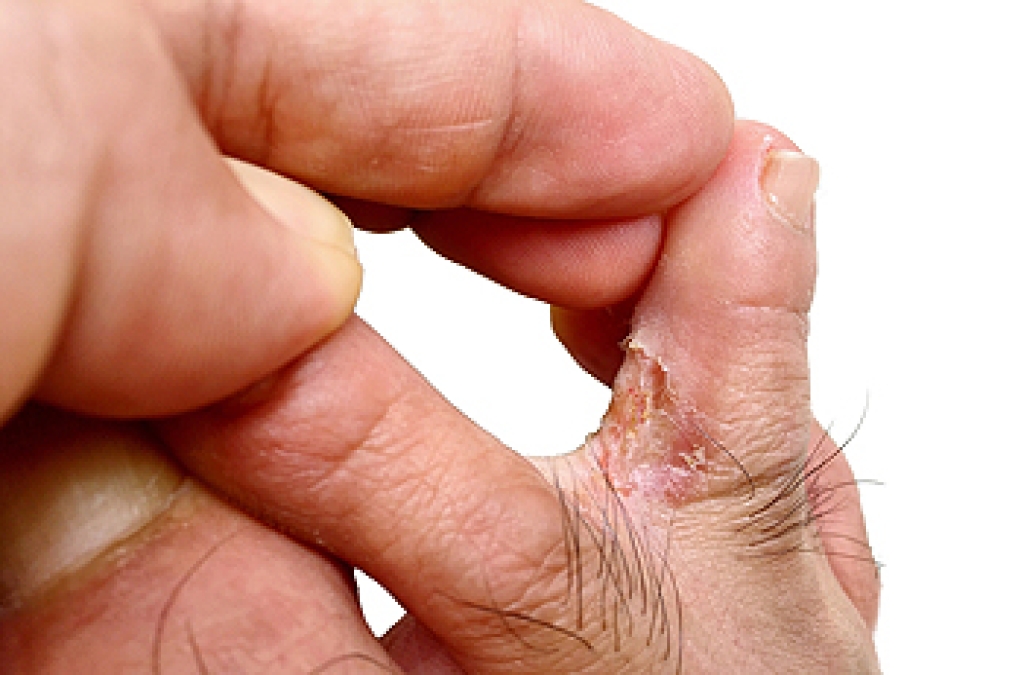Connect With Us
Blog
Blog
The Painful Problem of Ingrown Toenails

Ingrown toenails occur when the edge of a toenail grows into the surrounding skin, most commonly affecting the big toe. This condition can result from improper nail trimming, tight footwear, injury, or inherited nail shape. Symptoms include redness, swelling, tenderness, and pain along one or both sides of the nail. As the condition worsens, the area may become infected, causing drainage, warmth, and increased discomfort. The toe often looks swollen and may feel painful when walking or wearing shoes. A podiatrist can help by carefully examining the affected area to determine the severity of the problem. Treatment may include gentle nail lifting, removal of the ingrown portion, or minor procedures to prevent recurrence. Proper foot hygiene, footwear changes, and nail care education are also part of long-term management. It is suggested that you make an appointment with a podiatrist if you experience pain or infection from an ingrown toenail to ensure safe and effective treatment.
Ingrown toenails may initially present themselves as a minor discomfort, but they may progress into an infection in the skin without proper treatment. For more information about ingrown toenails, contact Jeffrey Radack, DPM of Texas Regional Foot & Ankle Clinics. Our doctor can provide the care you need to keep you pain-free and on your feet.
Ingrown Toenails
Ingrown toenails are caused when the corner or side of a toenail grows into the soft flesh surrounding it. They often result in redness, swelling, pain, and in some cases, infection. This condition typically affects the big toe and may recur if it is not treated properly.
Causes
- Improper toenail trimming
- Genetics
- Improper shoe fitting
- Injury from pedicures or nail picking
- Abnormal gait
- Poor hygiene
You are more likely to develop an ingrown toenail if you are obese, have diabetes, arthritis, or have any fungal infection in your nails. Additionally, people who have foot or toe deformities are at a higher risk of developing an ingrown toenail.
Symptoms
Some symptoms of ingrown toenails are redness, swelling, and pain. In rare cases, there may be a yellowish drainage coming from the nail.
Treatment
Ignoring an ingrown toenail can have serious complications. Infections of the nail border can progress to a deeper soft-tissue infection, which can then turn into a bone infection. You should always speak with your podiatrist if you suspect you have an ingrown toenail, especially if you have diabetes or poor circulation.
If you have any questions, please feel free to contact our office located in McKinney and Coppell, TX . We offer the newest diagnostic and treatment technologies for all your foot care needs.
Definition of Flat Feet

Flat feet occur when the arches of the feet collapse or fail to develop properly, causing the entire sole to touch the ground. This condition can lead to biomechanical imbalances that affect how weight is distributed across the feet. Flat feet are often associated with poor posture, reduced stability, and discomfort in the feet, ankles, knees, or lower back. A podiatrist can assess the severity of the condition and determine how it influences your gait and alignment. Treatment options may include custom orthotics, supportive footwear, and exercises to strengthen the foot muscles. If you have flat feet and experience pain or balance issues, it is suggested that you schedule an appointment with a podiatrist who can provide effective relief and treatment solutions.
Flatfoot is a condition many people suffer from. If you have flat feet, contact Jeffrey Radack, DPM from Texas Regional Foot & Ankle Clinics. Our doctor will treat your foot and ankle needs.
What Are Flat Feet?
Flatfoot is a condition in which the arch of the foot is depressed and the sole of the foot is almost completely in contact with the ground. About 20-30% of the population generally has flat feet because their arches never formed during growth.
Conditions & Problems:
Having flat feet makes it difficult to run or walk because of the stress placed on the ankles.
Alignment – The general alignment of your legs can be disrupted, because the ankles move inward which can cause major discomfort.
Knees – If you have complications with your knees, flat feet can be a contributor to arthritis in that area.
Symptoms
- Pain around the heel or arch area
- Trouble standing on the tip toe
- Swelling around the inside of the ankle
- Flat look to one or both feet
- Having your shoes feel uneven when worn
Treatment
If you are experiencing pain and stress on the foot you may weaken the posterior tibial tendon, which runs around the inside of the ankle.
If you have any questions, please feel free to contact our office located in McKinney and Coppell, TX . We offer the newest diagnostic and treatment technologies for all your foot care needs.
Understanding Swollen Ankles and Feet During Pregnancy

Swelling in the ankles and feet is a common part of pregnancy, especially in the later months when the body holds more fluid and the growing uterus places extra pressure on blood vessels. While mild puffiness is normal, noticeable or uneven swelling can signal that circulation is being compromised. Standing for long periods of time, warm weather, and wearing tight shoes can all make swelling worse. A podiatrist can evaluate whether the swelling is typical or related to another condition, and may recommend gentle movement, proper footwear, or custom orthotics to improve comfort and circulation. Caring for your feet during pregnancy not only eases daily strain but also supports balance and stability as your body changes. If swelling becomes painful, persistent, or is accompanied by redness or discomfort, it is suggested that you see a podiatrist for assessment and appropriate care.
Pregnant women with swollen feet can be treated with a variety of different methods that are readily available. For more information about other cures for swollen feet during pregnancy, consult with Jeffrey Radack, DPM from Texas Regional Foot & Ankle Clinics. Our doctor will attend to all of your foot and ankle needs.
What Foot Problems Can Arise During Pregnancy?
One problem that can occur is overpronation, which occurs when the arch of the foot flattens and tends to roll inward. This can cause pain and discomfort in your heels while you’re walking or even just standing up, trying to support your baby.
Another problem is edema, or swelling in the extremities. This often affects the feet during pregnancy but tends to occur in the later stages.
How Can I Keep My Feet Healthy During Pregnancy?
- Wearing orthotics can provide extra support for the feet and help distribute weight evenly
- Minimize the amount of time spent walking barefoot
- Wear shoes with good arch support
- Wear shoes that allow for good circulation to the feet
- Elevate feet if you experience swelling
- Massage your feet
- Get regular, light exercise, such as walking, to promote blood circulation to the feet
If you have any questions, please feel free to contact our office located in McKinney and Coppell, TX . We offer the newest diagnostic and treatment technologies for all your foot care needs.
Athlete’s Foot and Podiatric Care

Athlete’s foot, also known as tinea pedis, is a fungal infection and the most widespread form of dermatophytosis affecting the feet. It develops when fungi grow on the skin, often in warm and moist environments. Excessive foot sweating can easily facilitate fungal growth, making the condition more likely to appear between the toes or on the soles. Symptoms include itching, burning, peeling skin, redness, and an unpleasant odor. A podiatrist can confirm the diagnosis, recommend effective treatments, address moisture issues, and provide guidance to prevent the infection from returning. If you are noticing irritation or persistent changes in your skin, it is suggested that you seek professional podiatric care to begin effective treatment.
Athlete’s foot is an inconvenient condition that can be easily reduced with the proper treatment. If you have any concerns about your feet and ankles, contact Jeffrey Radack, DPM from Texas Regional Foot & Ankle Clinics. Our doctor will treat your foot and ankle needs.
Athlete’s Foot: The Sole Story
Athlete's foot, also known as tinea pedis, can be an extremely contagious foot infection. It is commonly contracted in public changing areas and bathrooms, dormitory style living quarters, around locker rooms and public swimming pools, or anywhere your feet often come into contact with other people.
Solutions to Combat Athlete’s Foot
- Hydrate your feet by using lotion
- Exfoliate
- Buff off nails
- Use of anti-fungal products
- Examine your feet and visit your doctor if any suspicious blisters or cuts develop
Athlete’s foot can cause many irritating symptoms such as dry and flaking skin, itching, and redness. Some more severe symptoms can include bleeding and cracked skin, intense itching and burning, and even pain when walking. In the worst cases, Athlete’s foot can cause blistering as well. Speak to your podiatrist for a better understanding of the different causes of Athlete’s foot, as well as help in determining which treatment options are best for you.
If you have any questions please feel free to contact our office located in McKinney and Coppell, TX . We offer the newest diagnostic and treatment technologies for all your foot and ankle needs.
Blog Archives
- 2025
- 2024
- 2023
- 2022
- 2021

